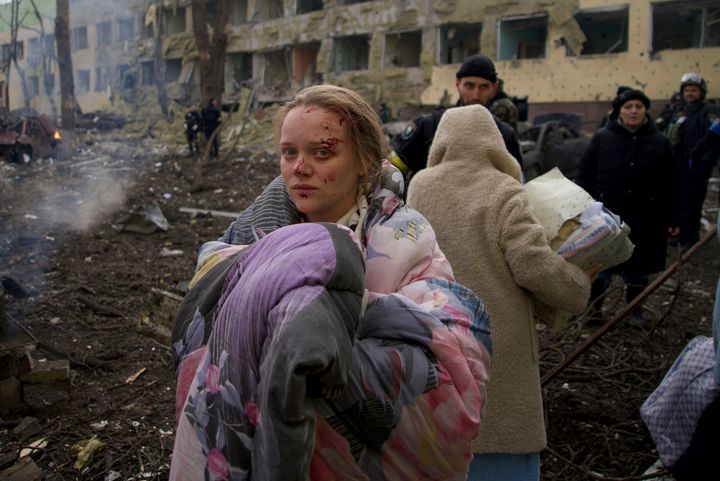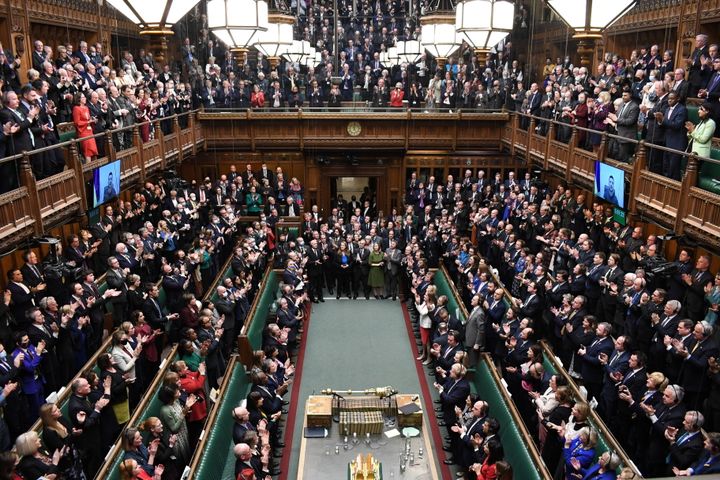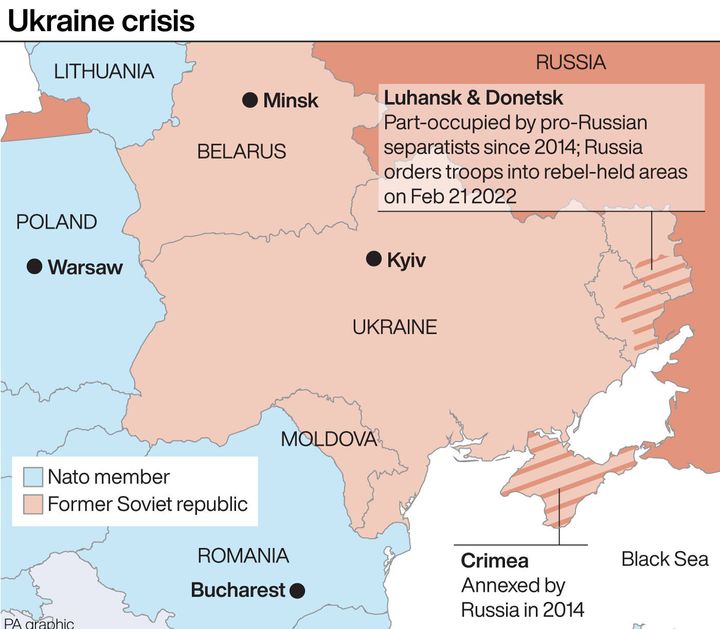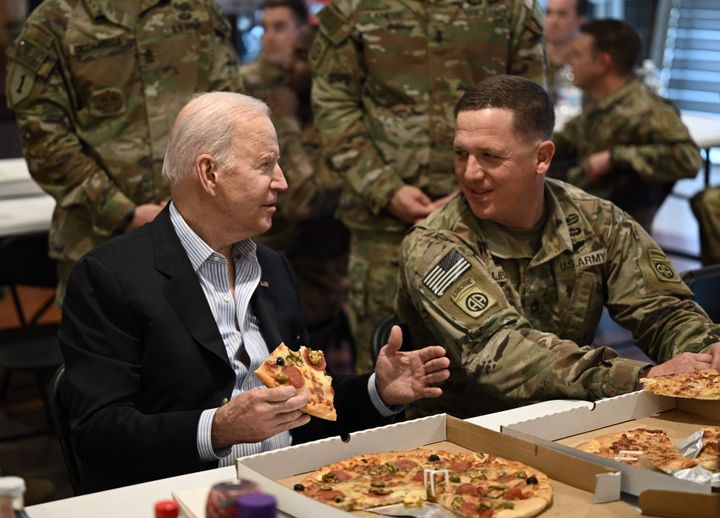For weeks there had been warnings, but many serious people could not believe it: Russia would never invade neighbouring Ukraine. Would they?
Then, on February 24, it happened. Tanks and soldiers streamed across the border, scenes more reminiscent of the Second World War than the remote cyber warfare that modern conflict was supposed to be dominated by.
The capital, Kyiv, was targetted. But Vladamir Putin appears to have under-estimated heavily-armed Ukrainian soldiers and volunteers, and Russia’s lightning strike appears to be nothing of the sort. A month on, here’s where the war stands.
What has happened in Ukraine?
As Putin’s frustration has grown, so has the brutality of Russian forces – killing civilians as well as soldiers and repeatedly accused of war crimes. But in the month since Moscow launched its invasion of Ukraine, Russian troops have met stiff resistance and failed to capture any major city.
They have instead been bombarding and encircling cities, laying waste to residential areas and driving around a quarter of Ukraine’s 44 million people from their homes. More than 3.7 million of them have fled abroad, half to neighbouring Poland.
Ukraine cities have been flattened by Putin in a manner similar to the way he destroyed the Chechen capital Grozny at the turn of the century. Among them is the besieged city of Mariupol, where authorities on Friday said about 300 people died in a Russian airstrike earlier this month on a theatre where hundreds of people were sheltering.
Mariupol, a city of 400,000 before the war, has been among the worst hit by the Russian bombardment. Tens of thousands of people are still believed to be trapped with little access to food, power or heat.
The cities of Chernihiv, Kharkiv and Sumy in the east have also endured devastating bombardment. The United Nations said it had confirmed 1,081 civilian deaths and 1,707 injuries in Ukraine since the February 24 invasion, adding that the real toll was likely higher.

The rise of Volodymyr Zelenskyy
Now cutting a familiar figure the world over – rallying his people from fortified bunkers, unshaven in olive-coloured T-shirt – little was known about Volodymyr Zelenskyy outside his homeland a month ago.
The former TV comic and actor has become the symbol of Ukraine’s resistance, deploying his oratory and presentational skills on social media and in defiant speeches.
The 44-year-old’s wartime leadership has even been compared to Winston Churchill by British politicians. Boris Johnson, who has written a book on Churchill, said: “I think that president Zelenskyy has proved to be a quite remarkable leader of his people – he’s rallied them and he’s been their voice. He knows, as Churchill said of himself, he may not have been the lion but he’s been privileged to give the roar.”

Zelenskyy’s leadership help explain the massive support from Western allies by way of “defensive” artillery. But he has been frustrated. His biggest request since the outbreak of war – a so-called no-fly zone to prevent bombings from Putin’s planes – has been rejected time and again, with the US and its allies fearing the move would trigger a wider world war with Russia.
Russia struggling
Russia’s invasion remains largely frustrated by the dogged resistance of Ukrainians, and there are signs Putin could be scaling back his ambitions.
On Friday, the defence ministry said that having accomplished the “first phase” of their military operations, Russian forces would concentrate on “liberating” the Donbas region which is part-held by Moscow-backed separatist rebels.
Western officials said it was a recognition that Russian forces were overstretched and may have to “pause” operations around Kyiv and other cities while they focus on the east of the country.
Russia’s defence ministry said 1,351 Russian soldiers had been killed 3,825 wounded, the Interfax news agency reported. Ukraine says 15,000 Russian soldiers have died.

What is the West doing?
Western powers have been urged to step up military support for the Ukrainian forces. But, since Ukraine is not a member of Nato, the US, the UK and its allies are limited in what they can do.
The military alliance called the North Atlantic Treaty Organisation – or Nato – and its 30 member nations are bound by Article 5 of its constitution. They agree to mutual defence – military action – in response to an enemy attack. The principle goes: “An attack against one ally is considered as an attack against all allies.”
Nato is anxious about further escalating tensions between the world’s two biggest nuclear powers – the US and Russia – and edging everyone closer to the “World War III” scenario many fear.
But the region is on edge. On Friday, US president Joe Biden visited Poland – which is a Nato member and shares a border with Ukraine – to underscore his commitment to the country. The US has said that it will defend “every inch” of Nato territory, and Warsaw is keen to see even more US troops stationed on the alliance’s eastern flank.

How does it end?
Four rounds of peace talks between Russia and Ukraine have yet to result in anything close to a diplomatic resolution.
Russia wants legal assurances that Ukraine will never join Nato, and for Ukraine to take a so-called neutral status and change its constitution to guarantee this.
The Kremlin has also demanded that Ukraine acknowledges Crimea, which Putin annexed in 2014, as Russian territory. It also wants recognition of the independence of pro-Russian separatists in Donetsk and Luhansk in Ukraine’s eastern industrial heartland of Donbas. The conflict in the region, which has claimed at least 14,000 lives, was Russia’s fabricated pretext to invade Ukraine last month.
Ukraine is seeking a ceasefire and a troop withdrawal. It has said it is willing to negotiate, but not to surrender or accept any ultimatums.
Ukraine has said it is prepared to accept security guarantees that stop short of joining Nato – a compromise on its part. But giving up the Crimea and the Donbas could be a bridge too far, and gaining that territory now seems to be Putin’s over-riding objective. Stalemate could beckon.

